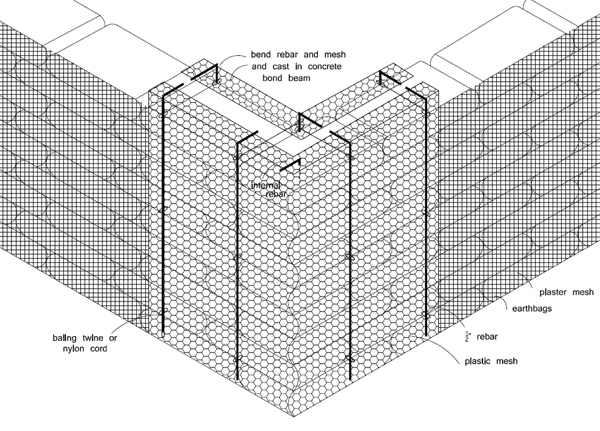
We’ve posted quite a few blog posts over the years about how to reinforce earthbag buildings. Due to the earthquake in Nepal, we’re getting lots of questions about reinforced earthbag methods for earthquake regions. The following list will save people lots of time searching our blog and websites. Watch for more news on this topic in the future.
Reinforced mesh corners
Structural mesh
External pinning
Earthbag benches for reinforcing doors
Earthbag buttresses
Building in the round
Confined earthbag
Integrated bond beam and lintels
Rebar reinforcement at openings, buttresses, etc.
Wall bracing overview

I know this technique well, but have never built one hands-on. My question is about plaster — in Nepal, it would be easy to use mud plaster, since everybody in the villages knows how to do it. Cement plaster would be the other option, but needs someone with a bit of experience to mix and apply correctly.
An earthbag wall without plaster gets its integrity from the barbed wire, and more from the chicken wire/plaster wire wrap. Is that enough in itself to fully support the wall? Mud plaster would add more integrity, but I’m guessing that cement plaster would add a lot more, and of course it’s waterproof. Your thoughts?
Thanks, Jim
Watch for tomorrow’s blog post on earthquake resistant earthbag building guidelines for Nepal. We’re recommending filling the gaps between bags with earth plaster and then covering the exterior with strong mesh and cement plaster.
Let me know if I missed anything.